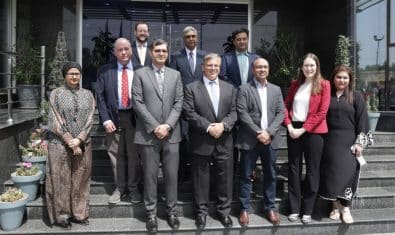Dr. John Goodenough, the renowned scientist who revolutionized battery technology, has passed away, leaving behind an indelible mark on the field. The University of Texas at Austin has officially announced the demise of this influential figure at the impressive age of 100.
Dr. Goodenough, widely recognized as the genius behind the creation of the lithium-ion battery, played a pivotal role in making cell phones, laptops, and electric vehicles feasible and practical.
Although the concept of lithium batteries had been explored by researchers previously, it was Dr. M. Stanley Whittingham who had made progress by combining lithium with titanium disulfide. However, it was Dr. Goodenough who achieved a groundbreaking advancement in 1980 while conducting research at the University of Oxford, as highlighted by The New York Times.
He successfully developed a cathode featuring layers of lithium and cobalt oxide, which not only generated a higher voltage but also significantly enhanced safety measures. These batteries possessed considerably larger capacities compared to their predecessors, such as lead-acid batteries used in cars and nickel-cadmium batteries commonly found in portable electronic devices.
The trajectory of technology took a significant turn when Dr. Akira Yoshino made a crucial decision to replace raw lithium with safer lithium ions. This choice led to the development of a practical design for Asahi Kasei Corporation, ultimately resulting in Sony’s groundbreaking release of the first consumer-friendly rechargeable lithium-ion battery in 1991.
The consequences were profound—mobile devices experienced a leap in performance, becoming either more portable or introducing entirely new possibilities. Cellphones and laptops underwent transformations, becoming sleeker, faster, and boasting longer battery life.
Moreover, this breakthrough made electric cars a viable and sustainable option.
However, Dr. Goodenough’s contributions extend far beyond this realm. During his tenure at MIT in the 1950s and 1960s, he played a pioneering role in advancing the technology that would eventually evolve into the random access memory (RAM) used in numerous computing products today.
He consistently collaborated with colleagues, sharing patents and collaborating on innovative projects. Dr. Goodenough’s passion for research remained undiminished, and even in his 90s, he continued to explore next-generation battery technologies that promised extraordinary performance for renewable energy and electric vehicles.
Despite being relatively unknown to the general public, Dr. Goodenough’s remarkable contributions did receive well-deserved recognition. His groundbreaking achievements were honored with prestigious awards, including the Nobel Prize in Chemistry in 2019 and the US National Medal of Science in 2011.
These accolades served as testaments to his exceptional expertise and undeniable impact on the scientific community.























